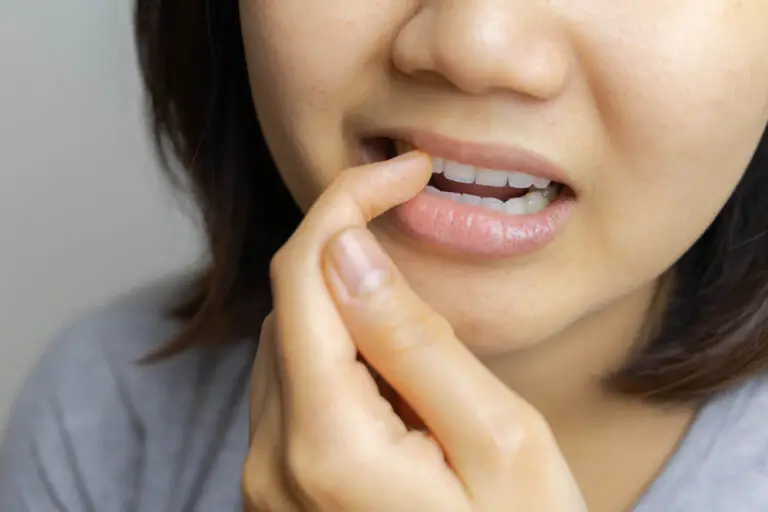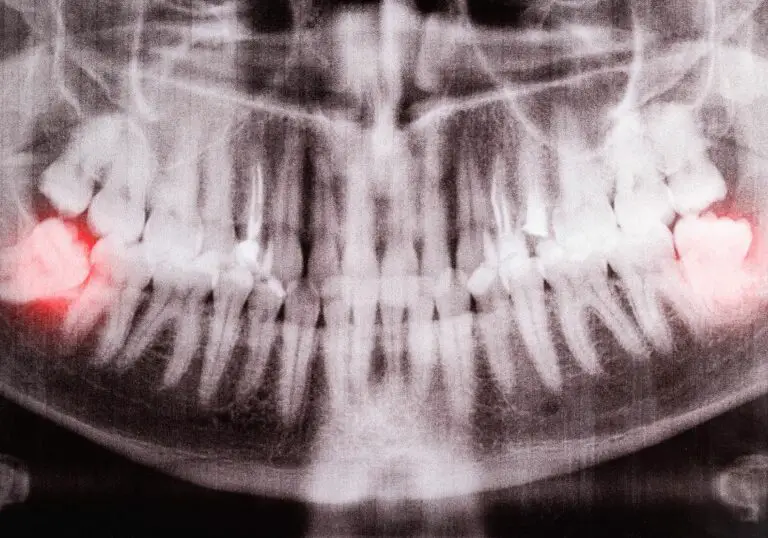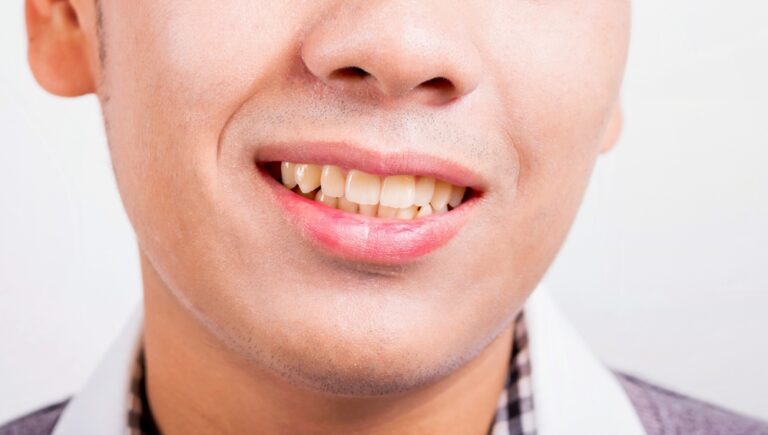When you close your mouth, have you ever wondered how your teeth should line up? It’s a question that many people have, and the answer may surprise you. The ideal alignment of your teeth can have a significant impact on your oral health, comfort, and appearance.
According to dental experts, the top teeth should be in line with the middle of your face or nose, with the middle of your lower teeth following the same line. This alignment ensures proper distribution of pressure when you bite or chew, reducing the risk of tooth wear, jaw pain, and other dental problems. However, various factors can affect the alignment of your teeth, including genetics, injury, and dental treatments.
In this article, we will explore the topic of how your teeth should line up when your mouth is closed. We’ll discuss the ideal alignment, common issues that can affect your bite, and what you can do to achieve optimal dental health. Whether you’re considering orthodontic treatment or simply curious about your dental health, this article will provide you with valuable insights and information.
Understanding Teeth Alignment

When you close your mouth, your teeth should line up in a specific way. The upper teeth should overlap the lower teeth slightly, and the upper front teeth should jet out over the lower front teeth by a couple of millimeters. This is what dentists call an ideal bite occlusion or teeth alignment. Almost no one has a perfect bite, but dentists use this ideal as a benchmark for healthy teeth alignment.
The alignment of your teeth is important for several reasons. First, it affects the way you chew and speak. When your teeth are aligned correctly, you can chew your food properly, which is essential for good digestion. Additionally, when your teeth are aligned correctly, you can speak clearly and articulate your words correctly.
Second, your teeth alignment affects the health of your mouth. When your teeth are aligned correctly, they are easier to clean, which reduces the risk of cavities and gum disease. When your teeth are misaligned, they can create pockets where bacteria can grow, leading to tooth decay and gum disease.
There are different types of teeth misalignment, also called malocclusion. Some people have an overbite, where the upper teeth overlap the lower teeth too much. Others have an underbite, where the lower teeth overlap the upper teeth too much. There are also crossbites, where the upper teeth fit inside the lower teeth, and open bites, where the upper and lower teeth do not touch at all.
If you have concerns about your teeth alignment, you should schedule an appointment with your dentist or orthodontist. They can evaluate your bite and recommend treatment options if necessary. Treatment options may include braces, aligners, or surgery, depending on the severity of the misalignment.
Ideal Teeth Alignment When Mouth is Closed
When your mouth is closed, your teeth should be in their ideal alignment, which ensures proper function and aesthetics. Here are the key aspects of ideal teeth alignment when your mouth is closed:
Upper and Lower Teeth Alignment
The upper teeth should overlap the lower teeth slightly, with the molars fitting into the grooves of the opposite molars. This alignment ensures that your bite is stable and balanced, reducing the risk of teeth grinding, jaw pain, and other issues.
If your upper teeth are too far forward or backward compared to your lower teeth, you may have an overbite or an underbite, respectively. These conditions can cause problems with chewing, speaking, and breathing, and may require orthodontic treatment to correct.
Front Teeth and Molar Alignment
When your mouth is closed, the edges of your upper front teeth should follow the curve of your lower lip, with the upper teeth slightly overlapping the lower teeth. This alignment ensures that your smile looks natural and attractive, and reduces the risk of chips, cracks, and other damage.
In addition, the points of your molars should fit into the grooves of the opposite molars, ensuring that your bite is stable and balanced. If your molars do not fit together properly, you may experience pain, sensitivity, and other issues.
Overall, ideal teeth alignment when your mouth is closed ensures that your bite is stable, balanced, and comfortable, reducing the risk of dental problems and enhancing your smile’s appearance. If you have any concerns about your teeth alignment, consult with your dentist or orthodontist to determine the best course of action.
Factors Affecting Teeth Alignment

When it comes to teeth alignment, there are several factors that can affect how your teeth line up when your mouth is closed. Understanding these factors can help you take steps to maintain good oral health and prevent alignment issues.
Genetics
One of the primary factors that can affect teeth alignment is genetics. The size and shape of your jaw, as well as the size and shape of your teeth, are largely determined by your genes. This means that if you have a family history of misaligned teeth, you may be more likely to experience alignment issues yourself.
Oral Habits
Certain oral habits can also have an impact on teeth alignment. For example, thumb-sucking or prolonged pacifier use can cause teeth to shift out of place, particularly in young children. Similarly, tongue thrusting (pushing the tongue against the front teeth) can also contribute to alignment issues.
Dental Health Care
Finally, the way you care for your teeth can also play a role in alignment. Poor dental hygiene can lead to gum disease, which can cause teeth to shift or become loose. Additionally, missing teeth or improperly fitting dental appliances (such as braces or retainers) can also contribute to alignment issues.
To maintain good teeth alignment, it’s important to practice good oral hygiene habits, avoid prolonged thumb-sucking or pacifier use, and seek prompt dental care if you experience any issues with your teeth or gums. By taking these steps, you can help ensure that your teeth stay healthy and properly aligned for years to come.
Signs of Misaligned Teeth
If you are wondering whether your teeth are properly aligned or not, there are a few signs that can indicate misalignment. In this section, we will discuss some of the most common signs of misaligned teeth.
Overbite
An overbite occurs when your upper front teeth overlap with your lower front teeth. This can cause your upper teeth to stick out more than they should. Some common signs of an overbite include:
- Your upper front teeth cover more than 50% of your lower front teeth
- Your upper front teeth stick out
- Your lower jaw appears to be too far back
Underbite
An underbite is the opposite of an overbite. It occurs when your lower front teeth overlap with your upper front teeth. Some common signs of an underbite include:
- Your lower front teeth stick out more than your upper front teeth
- Your chin appears to be more prominent than your upper jaw
- Your upper front teeth appear to be too far back
Crossbite
A crossbite occurs when your upper teeth bite inside your lower teeth. This can cause your teeth to wear down unevenly and may cause jaw pain. Some common signs of a crossbite include:
- Your upper teeth bite inside your lower teeth
- Your lower jaw shifts to one side when you bite down
- Your teeth appear to be misaligned
Open Bite
An open bite occurs when your upper and lower front teeth don’t touch when your mouth is closed. Some common signs of an open bite include:
- Your upper and lower front teeth don’t touch when your mouth is closed
- You have difficulty biting into food
- Your speech may be affected
If you are experiencing any of these signs, it’s important to consult with your dentist or orthodontist. They can help determine if you have misaligned teeth and recommend the best course of treatment.
Impact of Misaligned Teeth

Misaligned teeth can lead to a variety of issues, both with your oral health and your self-esteem. Here are some of the ways that misaligned teeth can impact your life.
Oral Health Issues
When your teeth are misaligned, it can be difficult to clean them properly. This can lead to a buildup of plaque and bacteria, which can cause tooth decay, gum disease, and other oral health problems. Misaligned teeth can also make it harder to chew and speak properly, which can affect your overall quality of life.
Self-Esteem and Confidence
Misaligned teeth can also have a negative impact on your self-esteem and confidence. If you’re self-conscious about your smile, you may be less likely to smile or speak up in social situations. This can lead to feelings of isolation and loneliness, which can take a toll on your mental health.
If you’re struggling with misaligned teeth, it’s important to talk to your dentist about your options. Orthodontic treatments like braces or clear aligners can help to straighten your teeth and improve your oral health. In some cases, more extensive treatments like surgery may be necessary.
Remember, your smile is an important part of who you are, and it’s worth taking care of. With the right treatment, you can achieve a healthy, beautiful smile that you can be proud of.
Correcting Teeth Alignment
If you’re experiencing issues with your bite or alignment, there are several options available to you. Here are three of the most common:
Orthodontic Braces
Orthodontic braces are the most traditional method for correcting teeth alignment. Braces consist of brackets that are bonded to the teeth and connected by wires. The wires are adjusted periodically to gradually move the teeth into the correct position.
While braces can be effective, they do require a significant time commitment. You’ll need to visit your orthodontist regularly for adjustments, and you’ll likely need to wear the braces for at least a year or two.
Invisalign
Invisalign is a newer alternative to traditional braces. Instead of brackets and wires, Invisalign uses a series of clear plastic aligners to gradually move the teeth into the correct position.
One of the biggest advantages of Invisalign is that the aligners are virtually invisible, so they’re a great option if you’re looking for a more discreet treatment. In addition, the aligners are removable, so you can take them out to eat, brush, and floss.
Dental Surgery
In some cases, dental surgery may be necessary to correct more severe alignment issues. This could include procedures like jaw surgery to reposition the jaw or tooth extraction to make more room in the mouth.
While surgery can be effective, it’s typically only recommended in more extreme cases. It’s also a more invasive option, so it may require a longer recovery time.
No matter which option you choose, it’s important to work closely with your dentist or orthodontist to develop a treatment plan that’s right for you. With the right approach, you can achieve a healthier, more comfortable bite and a beautiful smile.
Frequently Asked Questions
Should your front teeth touch when you bite down?
Yes, your front teeth should touch when you bite down. This is because the front teeth are designed to help you bite and tear food. However, they should not be the only teeth that touch. Your back teeth, or molars, should also touch when you bite down.
Should molars touch when biting?
Yes, your molars should touch when you bite down. This helps distribute the force of your bite evenly across all your teeth, reducing the risk of damage or wear to specific teeth.
My bottom teeth hit the back of my top teeth?
If your bottom teeth hit the back of your top teeth when you bite down, it may be a sign of a misaligned bite. This is known as a crossbite and can cause problems with chewing, speaking, and even breathing. You should consult with a dentist or orthodontist to determine the best course of treatment.
Should your teeth touch when mewing?
Mewing is a technique used to improve facial structure and promote proper tongue posture. While your teeth may touch slightly when mewing, the focus should be on keeping your tongue in the correct position against the roof of your mouth.
Are your teeth supposed to touch when you smile?
No, your teeth should not touch when you smile. In fact, your front teeth should only be slightly visible when you smile. If your teeth are too visible, it may be a sign of an overbite or other dental issue.
When I close my mouth my teeth don’t align?
If your teeth do not align when you close your mouth, it may be a sign of a misaligned bite. This can cause problems with chewing, speaking, and even breathing. You should consult with a dentist or orthodontist to determine the best course of treatment.







